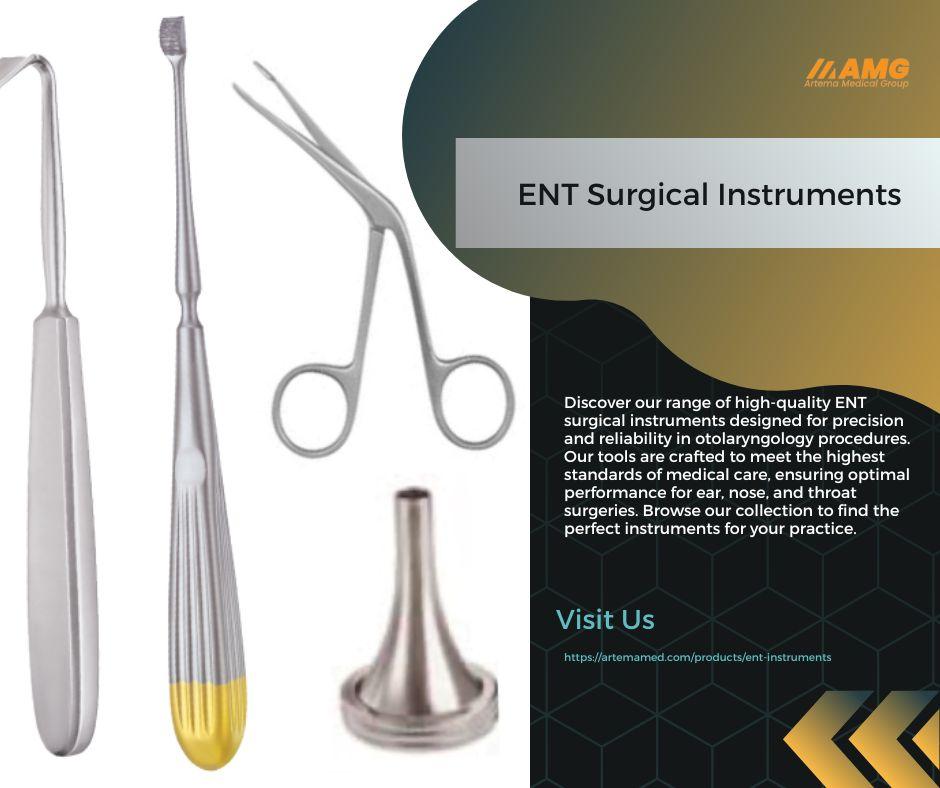ENT instruments, also known as ear, nose, and throat instruments, are vital for diagnosing and treating various ENT disorders. These tools are specifically designed to perform delicate and precise procedures, ensuring optimal patient care. This article delves into the different types of ENT surgical instruments and their specific uses.
Ear Instruments
Ear Speculums
Ear speculums are cone-shaped devices that allow doctors to inspect the ear canal and eardrum. They come in various sizes to accommodate different ear canal diameters.
Otoscope
An otoscope is a handheld device with a light and a magnifying lens. It enables healthcare professionals to get a clear view inside the ear, helping diagnose conditions like infections and eardrum perforations.
Ear Curettes
Ear curettes are small, spoon-shaped tools used to remove earwax or foreign objects from the ear canal. They are essential for maintaining ear hygiene and preventing blockages.
Microsuction Devices
Microsuction devices are used to clean the ear canal safely and efficiently. These instruments use gentle suction to remove debris and earwax without causing discomfort.
Nose Instruments
Nasal Speculums
Nasal speculums are used to widen the nostrils, providing a better view of the nasal cavity. They are crucial for diagnosing and treating nasal conditions.
Rhinoplasty Instruments
Rhinoplasty instruments include a variety of tools used during nasal surgeries. These instruments help reshape the nose by cutting, trimming, and repositioning nasal tissues and bones.
Sinus Forceps
Sinus forceps are used to remove foreign objects, polyps, or other tissues from the nasal passages. They are designed to reach deep into the nasal cavity safely.
Nasal Scissors
Nasal scissors are precise cutting tools used during nasal surgeries. They allow surgeons to make clean, accurate cuts in nasal tissues.
Bone Cutters
Bone cutters are specialized tools used to cut and shape nasal bones during surgical procedures. They are essential for procedures like septoplasties and rhinoplasties.
Throat Instruments
Laryngoscopes
Laryngoscopes are used to examine the larynx (voice box) and vocal cords. They provide a clear view of the throat and are essential for diagnosing and treating throat disorders.
Tonsil Forceps
Tonsil forceps are used during tonsillectomies to grasp and remove tonsils. They are designed to handle the delicate tissues of the throat safely.
Tonsil Scissors
Tonsil scissors are precise cutting tools used to remove tonsils during surgery. They allow for accurate cuts and help minimize bleeding.
Suction Tubes and Pumps
Suction tubes and pumps are used to remove fluids, blood, and debris from the surgical field. They ensure a clear view for the surgeon and help maintain a sterile environment.
Importance of Quality in ENT Instruments
High-quality ENT instrument are crucial for successful surgical outcomes. They provide precision, reduce the risk of complications, and ensure patient safety. Durable and reliable instruments also enhance the efficiency of surgical procedures.
Choosing the Right ENT Instruments
Selecting the right ENT instruments involves considering the type of procedure, the patient’s condition, and the surgeon’s preference. Instruments should be ergonomically designed, easy to sterilize, and made from high-quality materials. Consulting with experienced otolaryngologists can provide valuable insights into the best instrument choices.
Maintenance and Sterilization
Proper maintenance and sterilization of ENT instruments are essential to prevent infections and prolong their lifespan. Instruments should be cleaned immediately after use and sterilized according to the manufacturer’s guidelines. Autoclaving is a common method used to ensure all microorganisms are eliminated.
Conclusion
Understanding the various types of ENT instruments is crucial for healthcare providers. These tools play a vital role in diagnosing and treating ear, nose, and throat conditions. By investing in high-quality instruments and maintaining them properly, medical professionals can enhance patient care and ensure successful surgical outcomes.
By focusing on the different types of ENT surgical instruments, healthcare providers can improve their practice and deliver better patient outcomes.For more detail visit our website Artema medical.



